Planning and conducting
Based on the Australian Curriculum, Planning and conducting in Science Year 4 includes:
- ACSIS066 Consider the elements of fair tests and use formal measurements and digital technologies as appropriate, to make and record observations accurately
- ACSIS065 With guidance, plan and conduct scientific investigations to find answers to questions, considering the safe use of appropriate materials and equipment
- Plus Plan
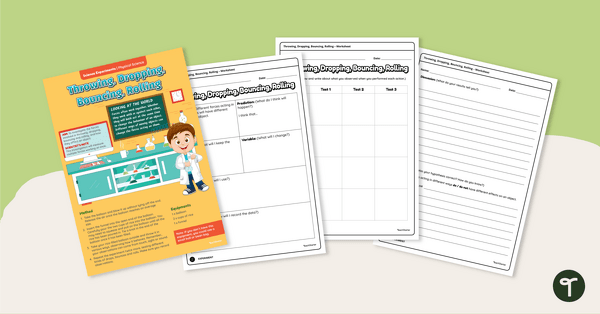
Force and Motion Experiment – Throwing, Dropping, Bouncing, Rolling
Use this hands-on force and motion experiment when teaching your students about how forces influence the movement of objects.
- Plus Plan
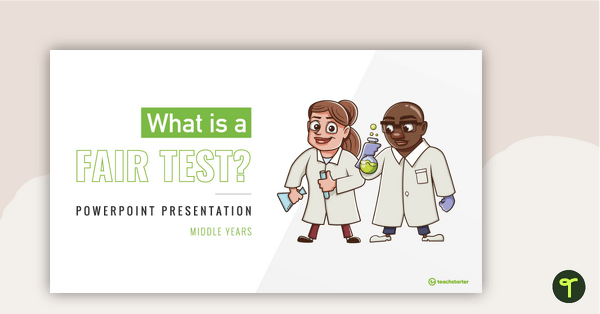
What is a Fair Test? - Middle Years PowerPoint
A 17 slide PowerPoint to use when teaching your students about how to make a fair test in Science.
- Plus Plan
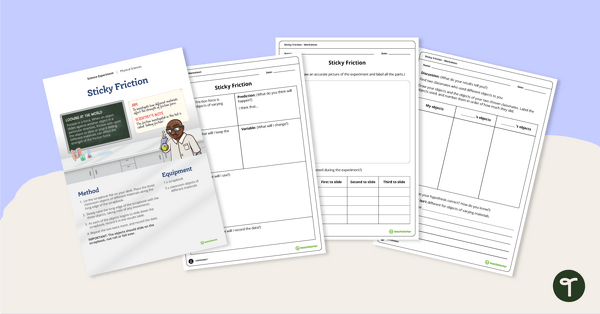
Friction Experiment – Sticky Friction
Use this engaging friction experiment when teaching your students about sliding friction and the effect it has on the movement of objects.
- Free Plan
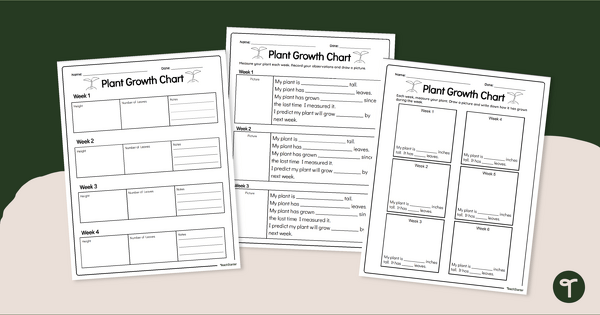
Plant Growth Chart Worksheet
Record the growth and changes in a plant over time with one of our differentiated plant growth charts.
- Plus Plan
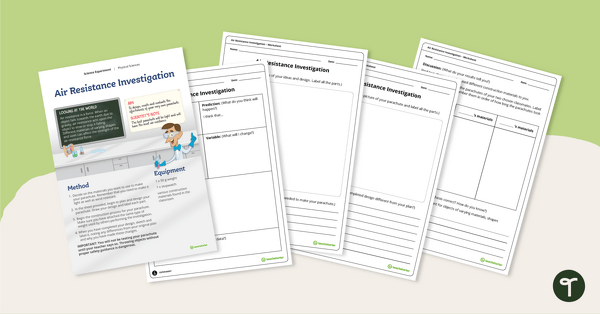
Air Resistance Force Investigation
Use this engaging air resistance force experiment when teaching your students about air friction and the effect it has on the effectiveness of a parachute.
- Plus Plan
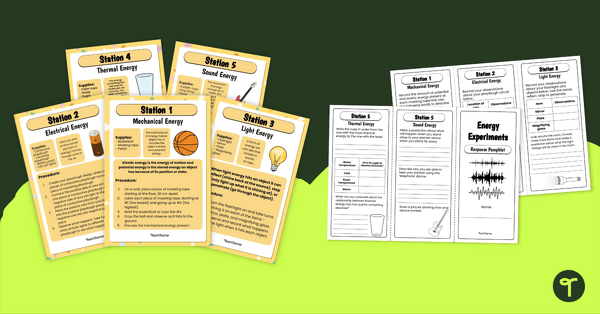
Forms of Energy – Year 4 Science Experiments for Kids
Investigate mechanical, electrical, light, thermal and sound energy with this set of science activities for kids.
- Plus Plan
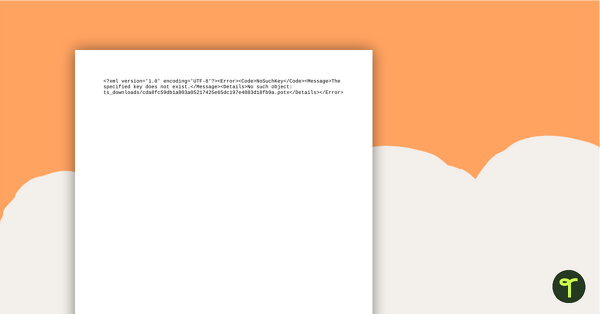
Natural and Processed Materials PowerPoint
A teaching presentation comparing natural and processed materials and how humans make scientific comparisons.
- Plus Plan

Plant Journal Observation Worksheets
Observe and record information about plants with a printable plant journal worksheet.
- Plus Plan
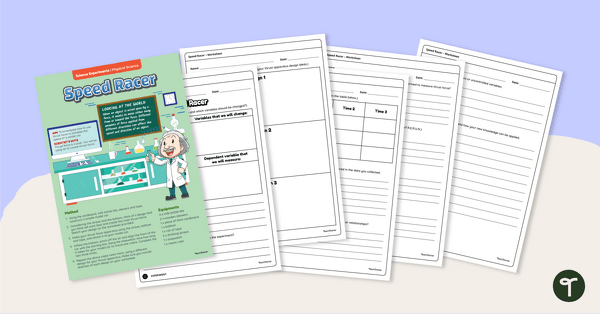
Balloon Car Experiment – Speed Racer
Use this hands-on balloon car experiment when teaching your Year 4 students about thrust force and its effect on the speed of objects.
- Plus Plan
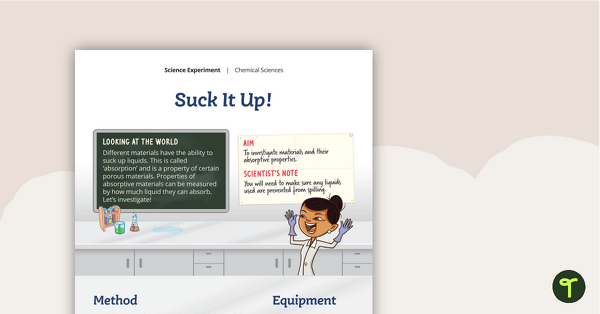
Science Experiment - Suck It Up!
A science experiment which investigates the absorptive properties of various materials.
- Plus Plan
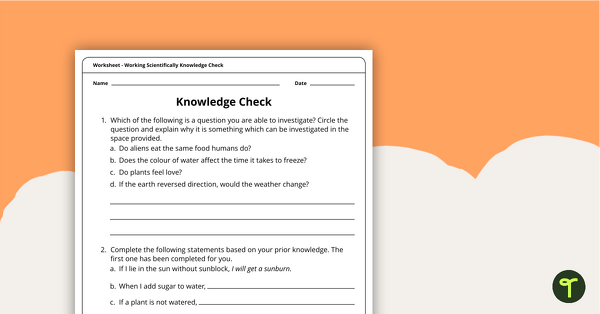
Working Scientifically Knowledge Check Worksheet
A worksheet used to check the students' knowledge of working scientifically.
- Plus Plan
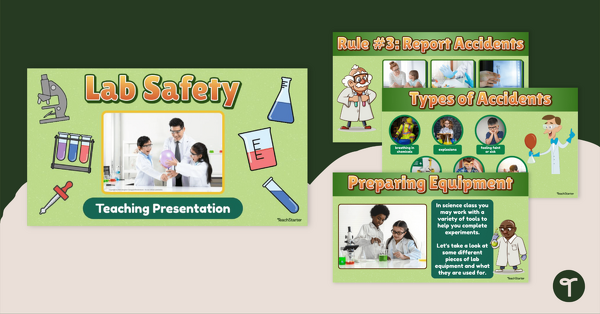
Lab Safety Teaching Slides
Teach the important of science safety before conducting experiments with this 18-slide teaching presentation.
- Plus Plan
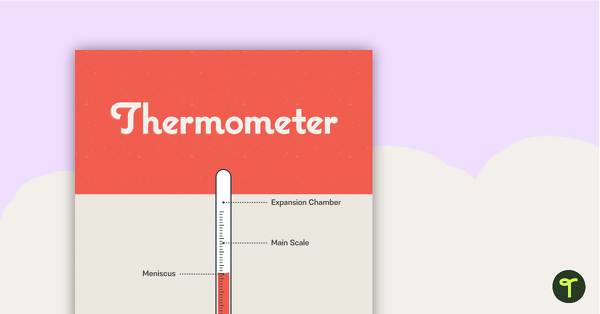
Thermometer Poster – Diagram with Labels
A poster containing a diagram with labels showing the key parts of a thermometer.
- Free Plan
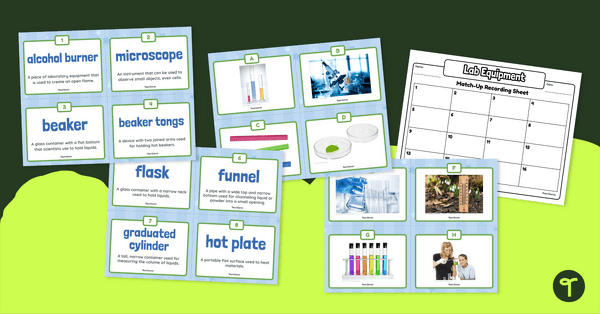
Lab Equipment Vocabulary – Match-Up Activity
Identify different types of science tools by matching vocabulary terms, pictures and definitions.
- Plus Plan
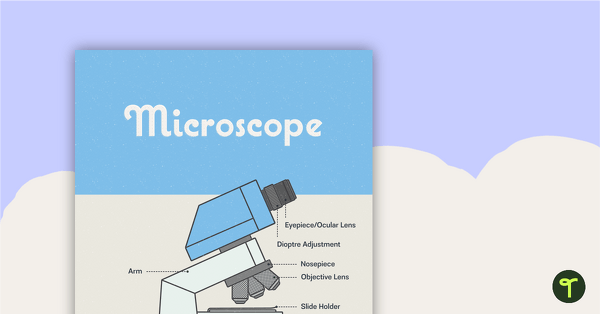
Microscope Poster – Diagram with Labels
A poster containing a diagram with labels showing the key parts of a microscope.
- Plus Plan
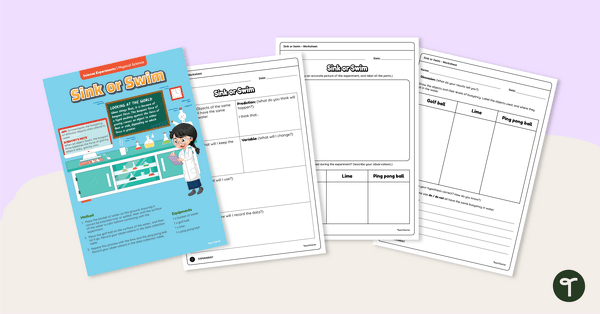
Buoyancy Experiment – Sink or Swim
Use this practical float or sink science experiment when teaching your students about why some objects float in water while others sink.
- Plus Plan
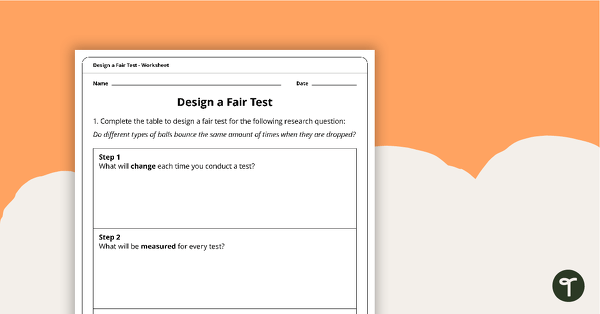
Design a Fair Test Worksheet - Middle Years
A worksheet to use when developing the concept of a fair test.
- Plus Plan
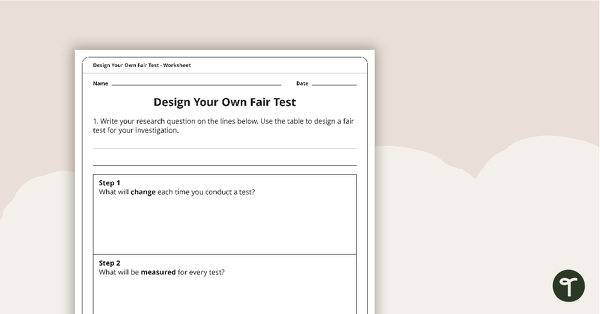
Design Your Own Fair Test Worksheet - Middle Years
A worksheet to use when developing the concept of a fair test.
- Plus Plan
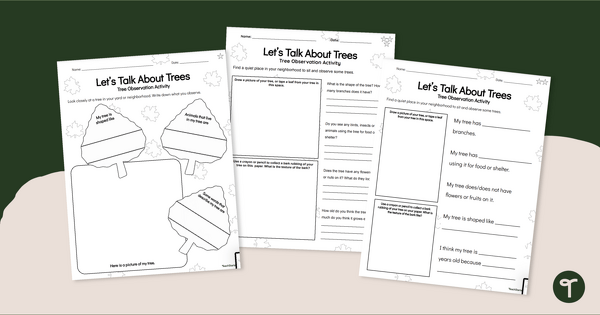
Tree Observation Worksheets
Record observations of trees in the local environment with a printable graphic organiser.
- Free Plan
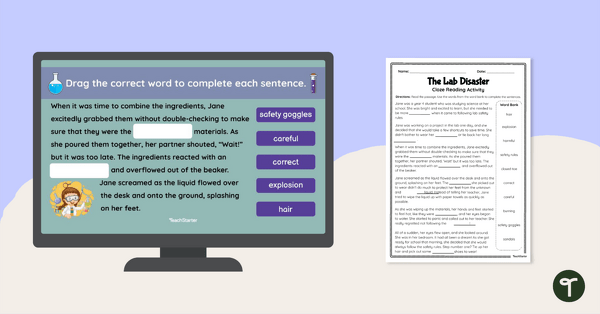
Lab Safety Interactive and Printable Cloze Reading Activity
Assess students' understanding of lab safety rules and expectations with this cloze reading activity.
- Plus Plan

Spring Scale Poster – Diagram with Labels
A poster containing a diagram with labels showing the key parts of a spring scale.
- Plus Plan
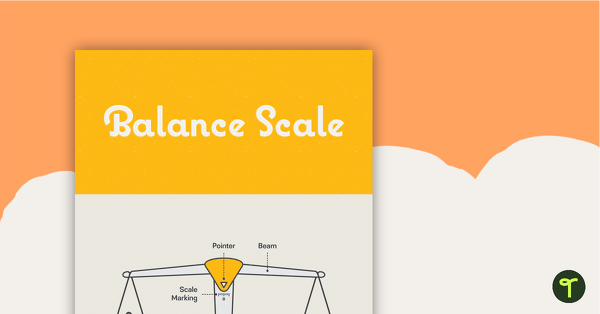
Balance Scale Poster – Diagram with Labels
A poster containing a diagram with labels showing the key parts of a balance scale.
- Plus Plan

Bunsen Burner Poster – Diagram with Labels
A poster containing a diagram with labels showing the key parts of a Bunsen burner.
- Plus Plan
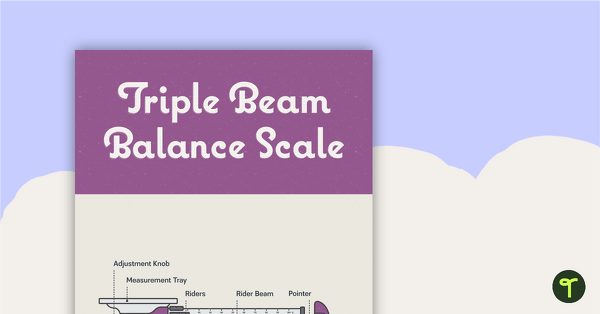
Triple Beam Balance Scale Poster – Diagram with Labels
A poster containing a diagram with labels showing the key parts of a triple beam balance scale.
- Free Plan
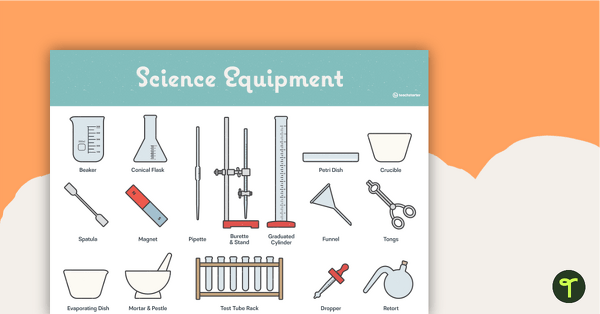
Lab Equipment Poster – Diagram with Labels
A poster containing a diagram with labels showing standard lab equipment.
- Plus Plan
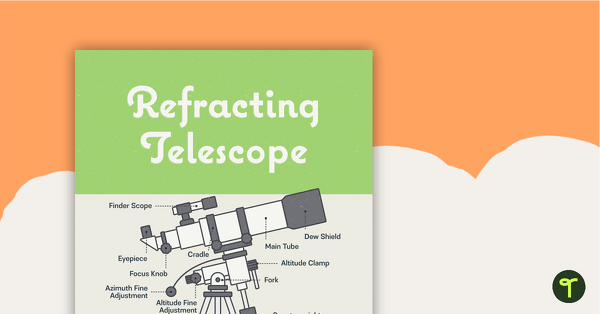
Refracting Telescope Poster – Diagram with Labels
A poster containing a diagram with labels showing the key parts of a refracting telescope.
- Plus Plan
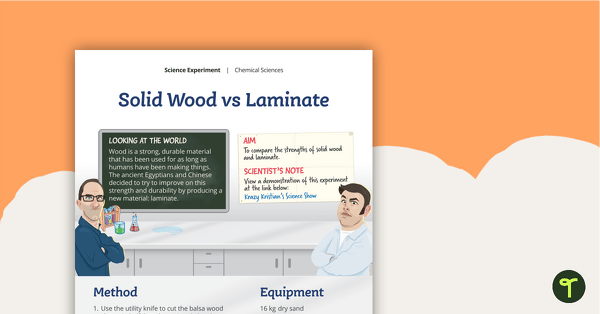
Science Experiment - Solid Wood vs Laminate
A science experiment which investigates the strengths of solid wood and laminate.
- Plus Plan
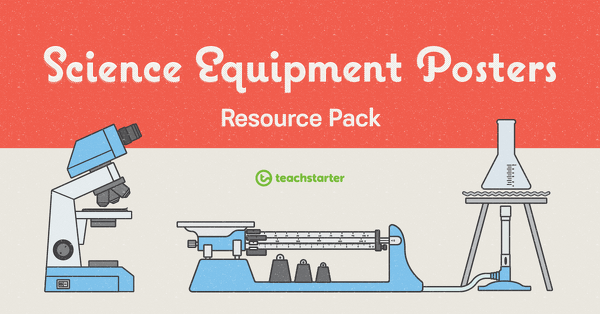
Science Equipment Poster Bundle for the Classroom
A poster resource pack containing a diagrams with labels showing the key parts of various pieces of scientific apparatus.
- Plus Plan
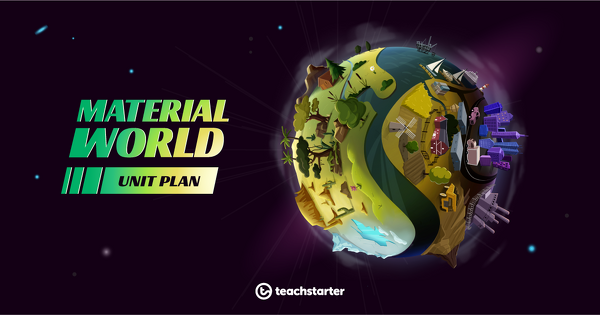
Material World Unit Plan
This Chemical Sciences unit investigates natural and processed materials. Demonstrations and experimental procedures are explored with particular attention given to the scientific method.
- Plus Plan
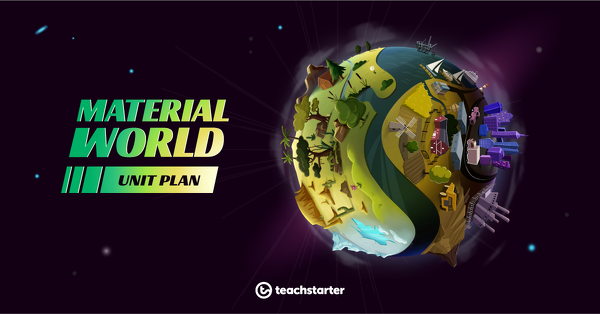
Working Scientifically Knowledge Check
An assessment task in which students will demonstrate their knowledge and understanding of how to work scientifically.
- Plus Plan
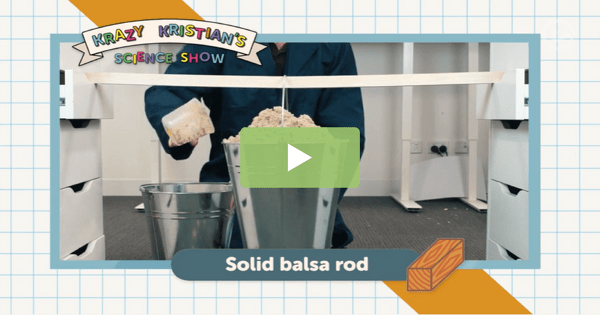
Natural and Processed Materials Video – Solid Wood vs Laminate
Explore natural and processed materials with this science experiment video perfect for your Year 4 science unit!
- Plus Plan
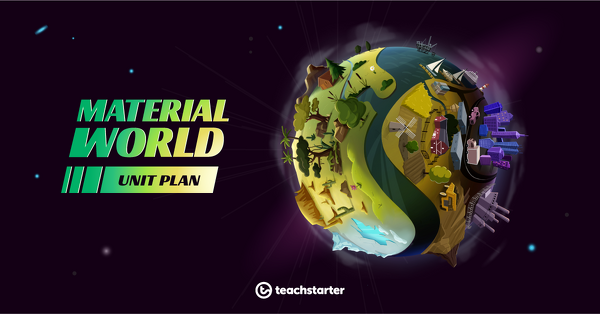
Science Experiment - Suck It Up!
A 60 minute lesson in which students will investigate materials and their absorptive properties through a scientific investigation.